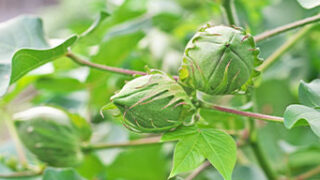Cotton Fiber Harvesting & Ginning
Cotton Fiber Harvesting
The first step in cotton processing is harvesting, and for the farmers, it’s an important and personal process. It’s the culmination of months of planting and tending, and it’s the most important step before the cotton begins its traceability journey from the gin to the mill.
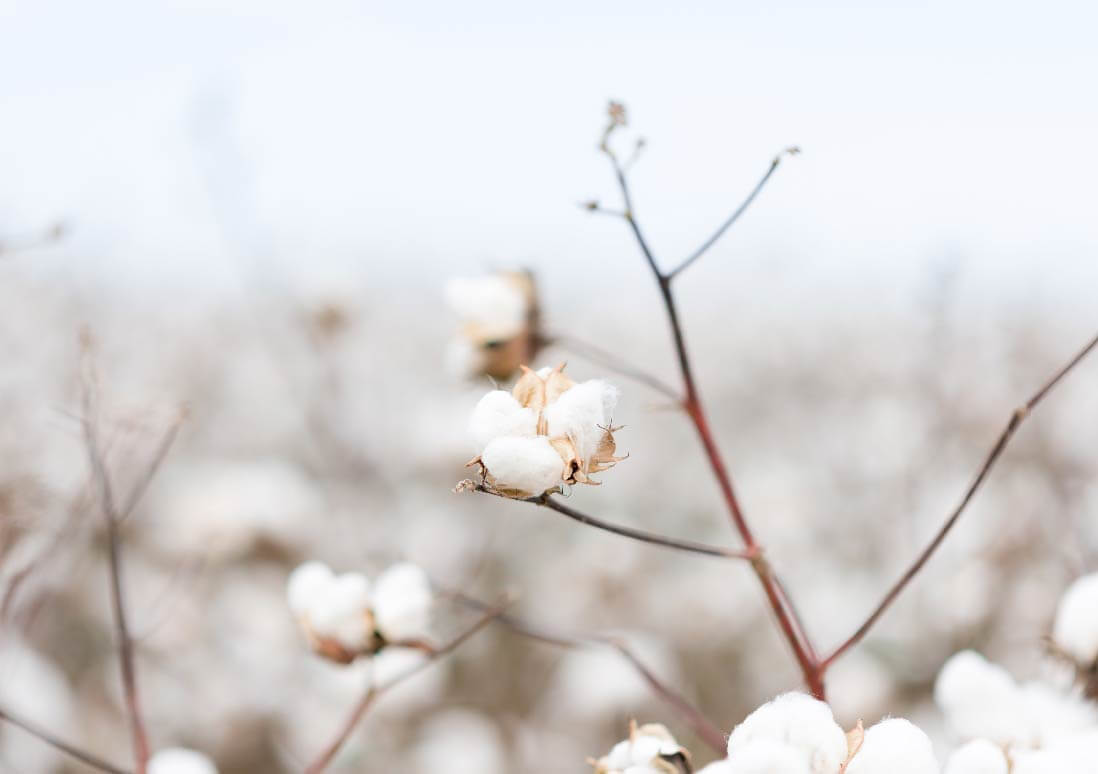

After the crop matures, harvesting begins. Harvesting too soon can disrupt maturation, negatively affecting the fiber quality while waiting too long can result in a reduced fiber yield.

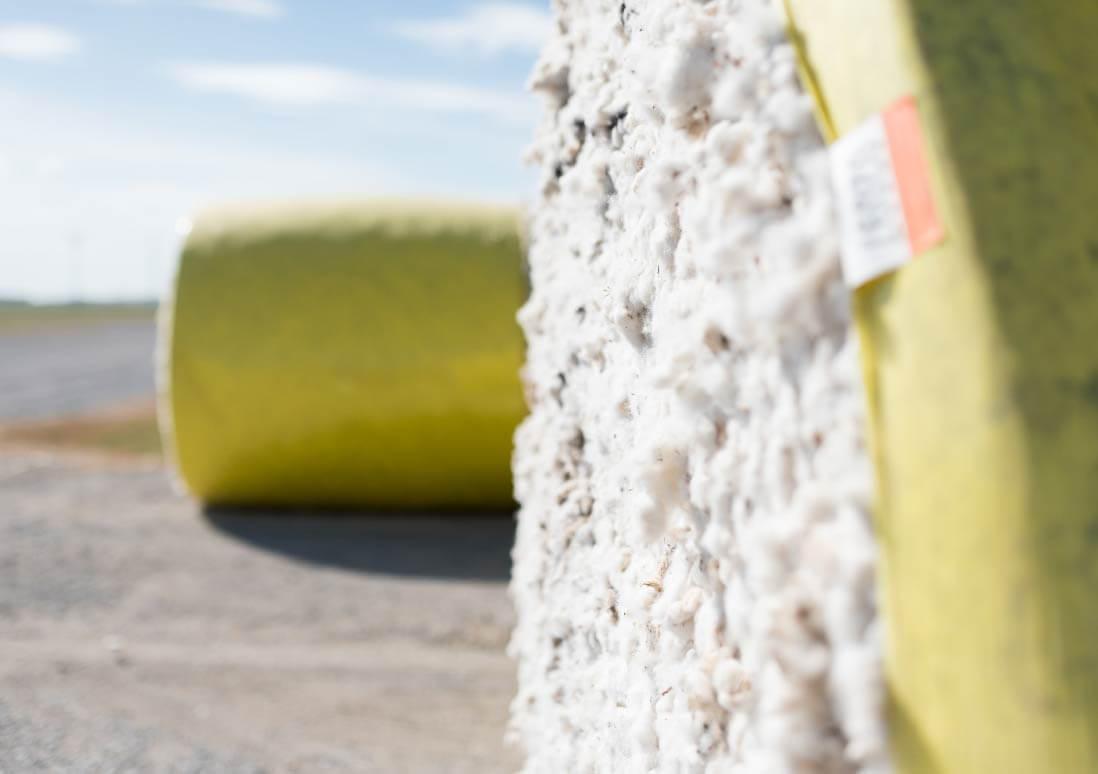
Cotton Pickers
Utilizing cotton pickers ultimately means leaving the plant intact in the field. They remove the seed cotton from the bolls but leave the burrs (dried locules) behind.
Cotton pickers function by utilizing a series of spindles which are round, tapered, and fluted with barbs, and stacked on a spindle bar in the picker drum. As the machine enters a cotton row, the entire spindle bar rotates and as the rotating spindles come into contact with the seed cotton on the plant, the cotton is pulled out of the burr (locule).
As the bar continues to rotate, it makes contact with a spinning doffer that wipes the cotton off the spindle and into a pneumatic conveying system that moves it to the basket.
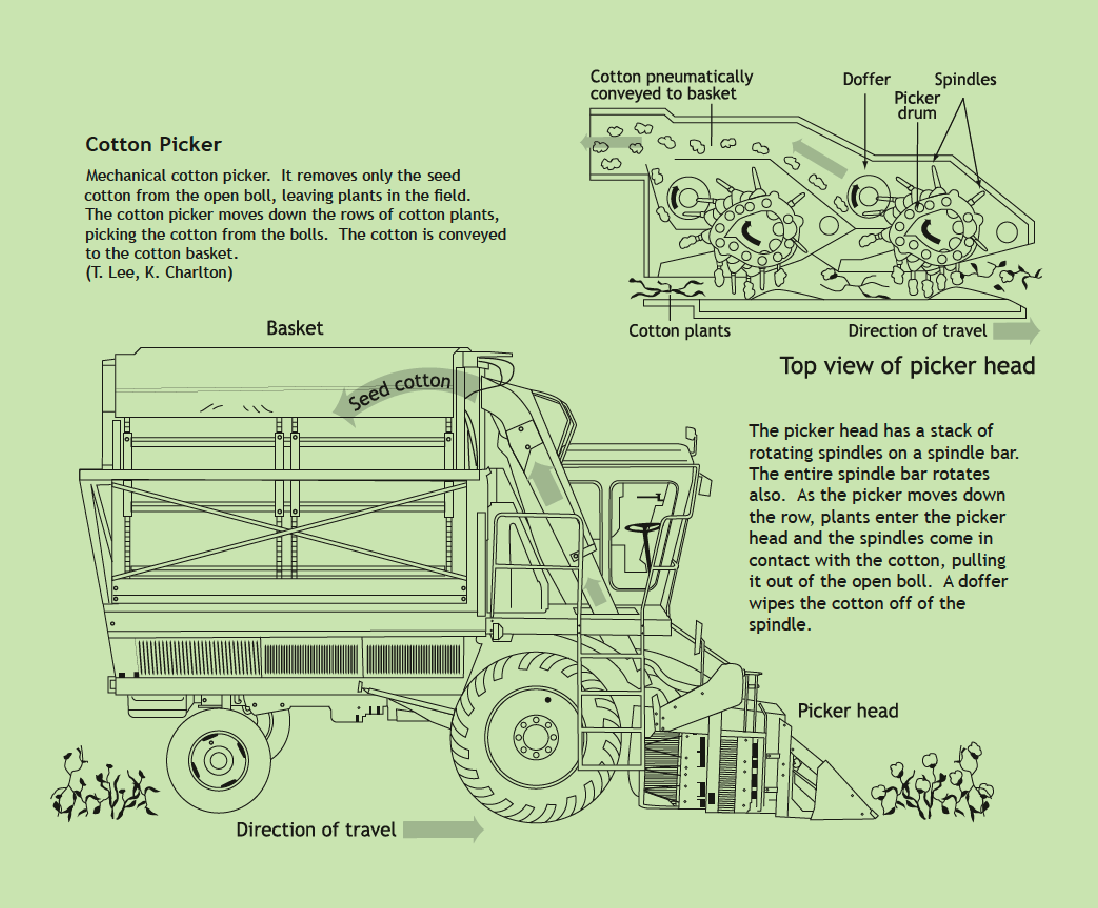
This image illustrates cotton modules, which is the preferred way to harvest cotton on modern farms.
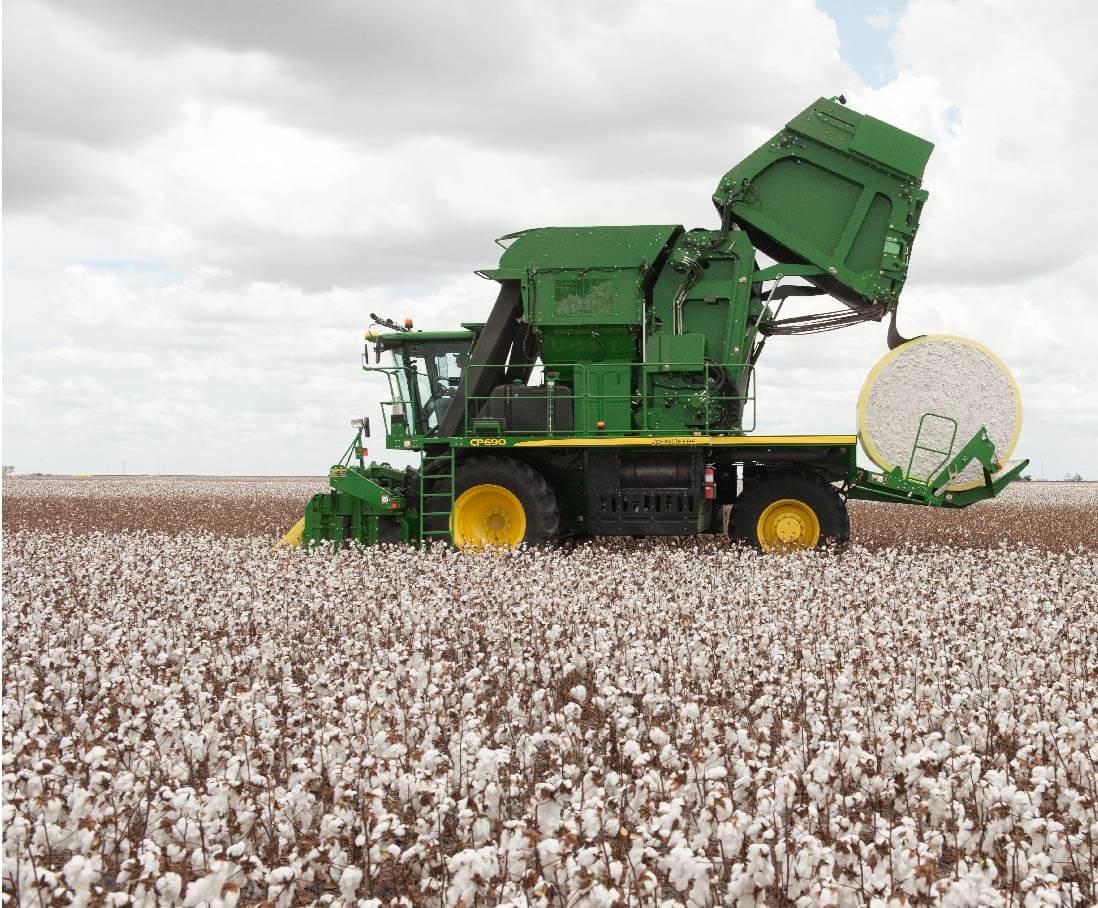
Cotton Strippers
Cotton strippers are used to harvest storm-proof cotton, a variety that minimizes field losses from weather.
The seed cotton is held in the boll until the plant is killed—either by cold weather or chemical harvest aids—and then the cotton stripper is introduced to remove the complete boll from the plant. The stripper removes the boll by utilizing two counter-rotating stripper rolls consisting of nylon brushes and rubber bats.
This method of harvest results in a higher trash content from content harvested of seed cotton and there are various methods for disposing of the plant trash.
Some strippers have field cleaners that separate the burrs and sticks from the seed cotton, leaving the trash in the field and putting clean cotton into the basket.
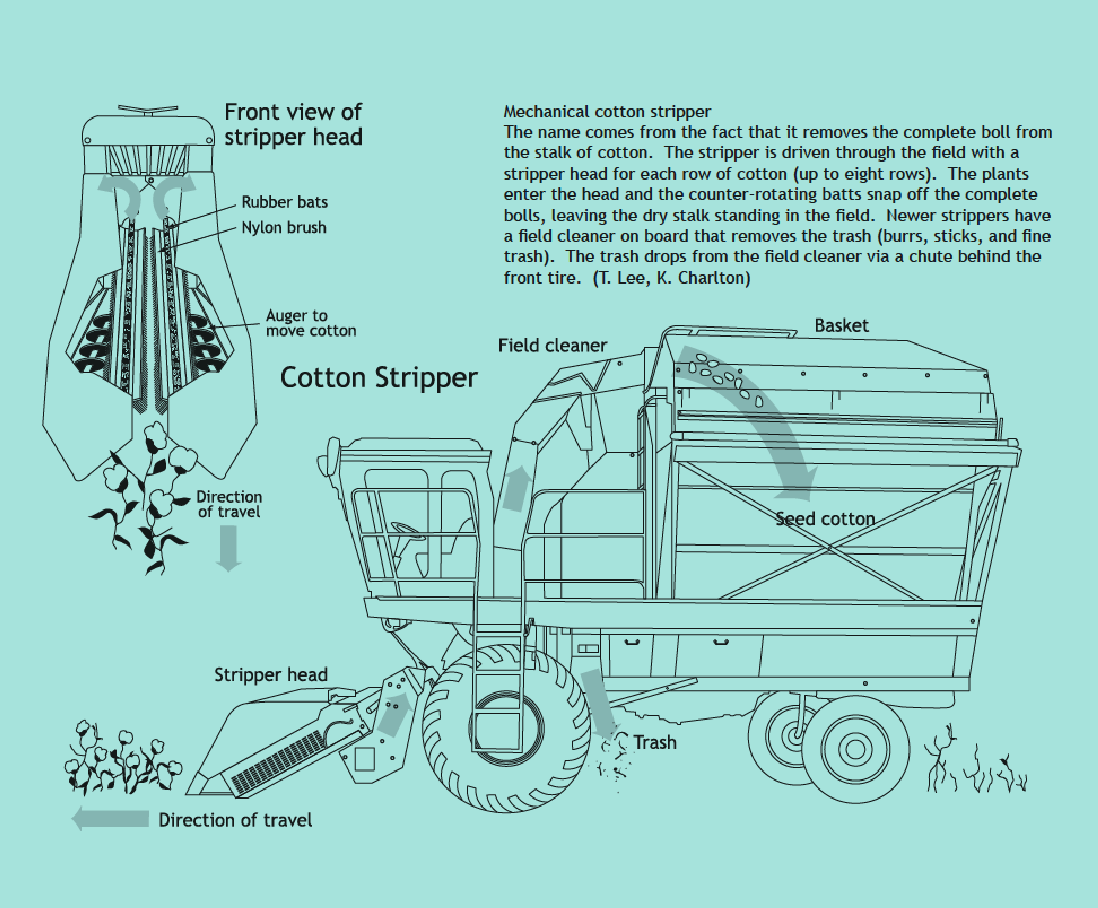
Module Builders
The seed cotton in the harvester basked is then dumped into a module builder which packs the cotton into eight to twelve bale modules.
A module builder is a metal box with no top or bottom that is equipped with a moveable tramper. The tramper packs the cotton much like a trash compactor and when complete, the rear door opens, the builder is lifted by hydraulics, and then the module builder is pulled away to another location.
Historically, once packed, the cotton was covered with a tarp and left in the field to be picked up by a truck. Today, most cotton pickers are highly automated.
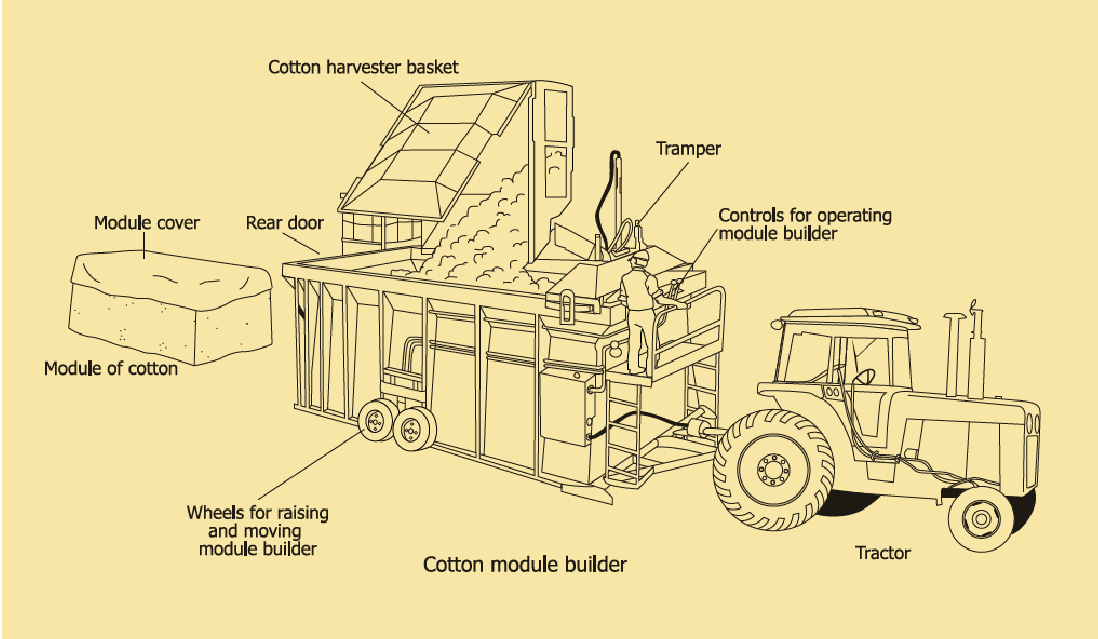
This rectangular method of cotton module building has fallen out of fashion in favor of the round modules.
As the round modules are being constructed, they are covered with an engineered polyethylene film that both protects the cotton and provides compression to maintain module shape and density. This fully protects the module and prepares it to be taken to the next stop on its journey—the gin.
Cotton Ginning
Harvested cotton is called seed cotton because the fibers are still attached to the seed. The principal function of a cotton gin is to convert farmers’ harvests into salable commodities—fiber and seed—by separating the cotton from the seed to ensure tiny bits of trash (like leftover seed) are disposed of. Seed bits spun into yarn can cause the yarn to break and affect the value of the commodity on the open market.
From Cotton Plant to Commodity
- Gins dry and clean the seed cotton
- Gins separate the fibers from the seed
- Gins clean the fibers and package them for commerce
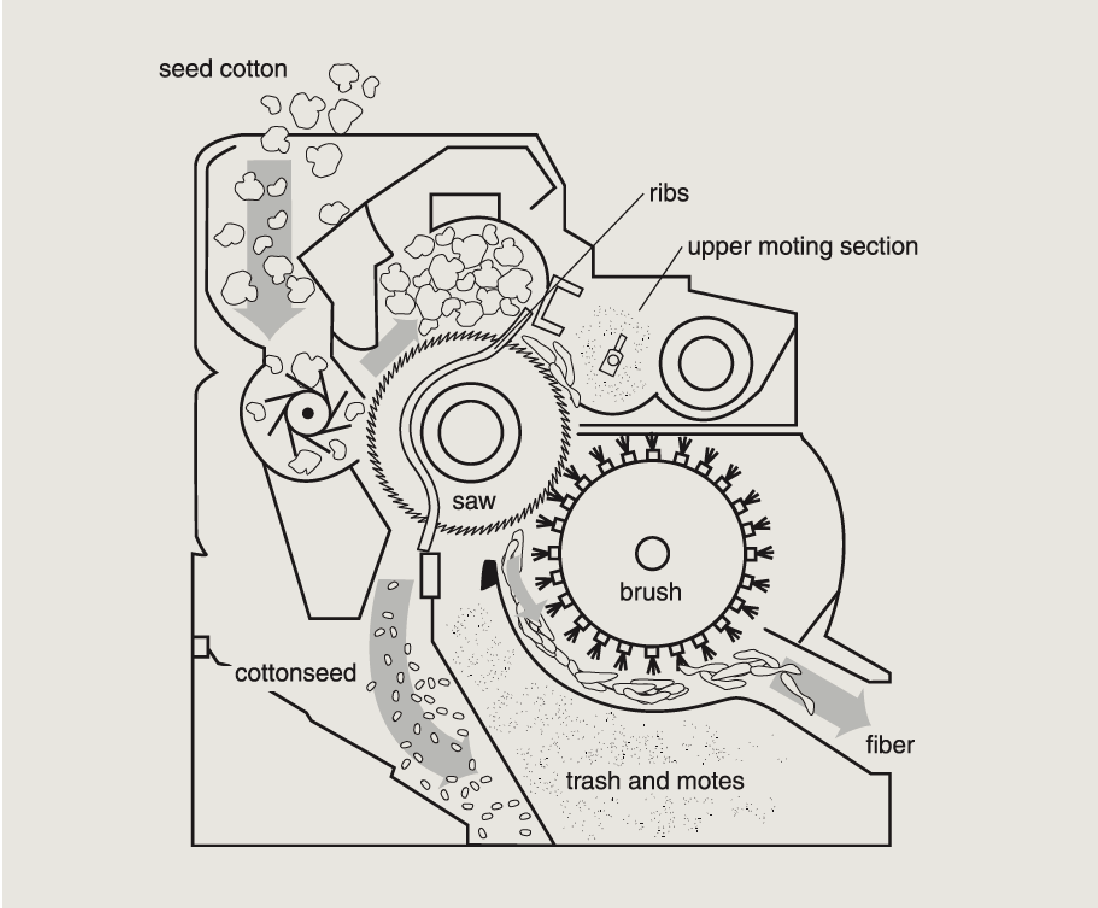
In order to convert mechanically harvested cotton into salable commodities, gins have to dry and clean the seed cotton, separate the fibers from the seed and then clean the fibers and package them for commerce.
Cotton Commodities
The cotton plant produces products that are utilized by industries ranging from agriculture to manufacturing. Cottonseed is sold to dairies for feed, to oil or mills, or saved for planting the next year’s crop. The cotton fiber—the more valuable of the cotton commodities—is the most commonly used fiber in the world for the manufacturing of textile products.
Cotton is the manufacturing textile of choice for many reasons—the quality and longevity of the fiber, the efficiency of its production, and the profitability of both the cotton crop and its end products. Learn more about this natural, field-harvested crop: Natural vs. Synthetic Fibers: Classification, Qualities, and Life Cycle
If you liked this overview of cotton harvesting and processing, download the full academic guide, Cotton Fiber Development and Processing. To learn more about cotton plant growth and fiber development, explore Cotton Fiber Development and Maturation.
More on Cotton Fiber Science
- Sourcing Cotton: How Fiber Quality Impacts Your End Product
- Natural vs. Synthetic Fibers: Classification, Qualities, & Life Cycle
- Cotton Fiber Development & Maturation
- Cotton Fiber Qualities & Evaluation
- Cotton Classification
